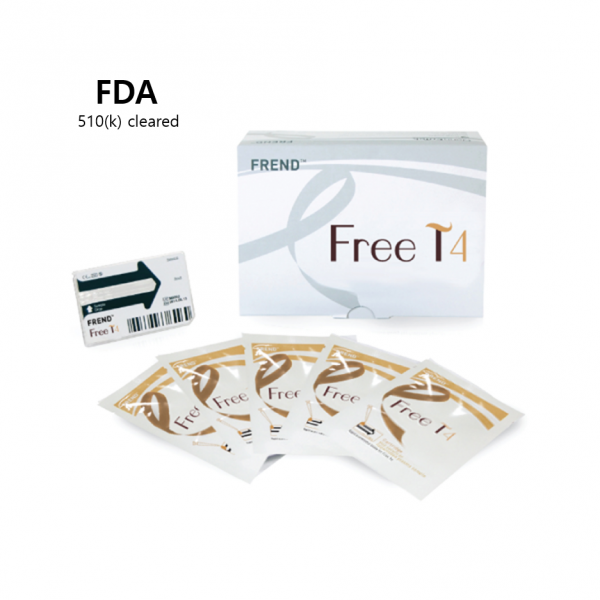POCT's Impact on Urgent Care: Advantages & Integration
- NanoEntek

- Aug 24, 2023
- 4 min read
In today's fast-evolving healthcare landscape, urgent care clinics play a crucial role in providing accessible medical services. With over 10,000 such clinics in the US, they bridge the gap between primary care and emergency rooms. The majority are located in California (10%), Texas (8%), and Florida (7%), all within a 10-minute drive from patients' homes. The integration of Point-of-Care Testing (POCT) within these clinics has revolutionized patient care. This article explores the benefits of POCT in urgent care, emphasizing its accessibility and importance.
The Distinction between Emergency Rooms and Urgent Care Clinics
Emergency rooms (ERs) and urgent care clinics serve distinct roles within the healthcare spectrum. Emergency rooms are designed to handle critical and life-threatening situations that require immediate attention, such as severe injuries, heart attacks, and strokes. They are equipped with specialized medical staff and advanced diagnostic equipment to provide intensive care.
On the other hand, urgent care clinics cater to non-life-threatening medical issues that require prompt attention but do not necessitate an emergency room visit. These clinics are designed to offer convenient access to healthcare for minor injuries, illnesses, and preventive services. Urgent care clinics are equipped to handle a wide range of medical conditions, from minor fractures to common infections, making them an essential resource for communities.
If you want to see the difference in video, you can check the shorts provided from UNC Health: https://youtube.com/shorts/5tCFqSMvtig?feature=share
The Benefits of Point-of-Care Testing in Urgent Care Clinics
Point-of-Care Testing (POCT) involves conducting medical tests at or near the site of patient care, enabling rapid diagnosis and treatment decisions. Integrating POCT into urgent care clinics offers several advantages:

Speedy Diagnoses
POCT expedites the diagnostic process, enabling healthcare providers to make quicker decisions. This is particularly crucial in urgent care settings, where patients seek prompt relief and treatment.
Reduced Turnaround Times
Traditional laboratory testing often involves sending samples to off-site facilities, leading to delays in receiving results. POCT minimizes these delays, allowing for swift diagnosis and appropriate interventions.
Enhanced Patient Satisfaction
Faster diagnoses and streamlined treatment contribute to higher patient satisfaction levels. Patients appreciate the convenience and efficiency of receiving immediate results and treatment plans.
Optimized Resource Utilization
POCT helps prevent unnecessary use of emergency room resources for cases that can be handled effectively in urgent care settings, thereby reducing ER overcrowding and enhancing resource allocation.
Early Intervention
With POCT, conditions can be identified in their early stages, enabling healthcare providers to initiate treatment promptly. This is particularly valuable for infectious diseases and chronic conditions.
Ideal Testing Items for Urgent Care Clinics
When it comes to testing items suitable for urgent care clinics, a well-rounded selection is essential to cover a wide spectrum of medical conditions. Some optimal testing items include:
Cardiac Markers
Rapid cardiac marker testing can aid in diagnosing heart attacks and other cardiac issues, enabling swift intervention and referral to specialized care if needed. The items can be BNP, D-dimer, CK-MB, TnI, Myoglobin, and etc.
Infectious Disease Testing
Rapid testing for infectious diseases such as influenza, strep throat, and COVID-19 is critical for controlling outbreaks and providing timely treatment. The items can be influenza A&B, RSV, Legionella, COVID-19 and etc.
Basic Metabolic Panels
Testing for blood glucose levels, electrolyte imbalances, and kidney function can help diagnose and manage conditions like diabetes and dehydration. The items can be potassium, sodium, chloride and etc.
Thyroid Function Tests
Quick thyroid function tests can aid in diagnosing thyroid disorders and facilitating timely treatment.The items can be TSH, free T4, Total T3, and etc.
Coagulation Tests
Rapid coagulation testing is vital for assessing bleeding disorders and monitoring anticoagulant therapy.
Advancements in EMR Systems: Bridging the Gap
*The condition of the systems may vary in the regional urgent care clinic settings.
The development of more sophisticated Electronic Medical Record (EMR) systems has paved the way for improved patient care coordination between urgent care clinics and emergency rooms. These systems can facilitate the seamless sharing of patient records, diagnostic results, and treatment plans, promoting continuity of care.

Enhanced EMR systems enable urgent care clinics and emergency rooms to:
Access Patient History
Care providers can access a patient's medical history, allergies, and previous test results, ensuring informed decision-making.
Coordinate Care
EMR systems allow for smoother coordination between different healthcare facilities, reducing the risk of duplicating tests and procedures.
Follow-up Care
Providers can offer appropriate follow-up care recommendations based on the patient's medical history and test results.
Reduce Errors
Improved information sharing reduces the risk of errors, ensuring patients receive accurate and timely care.
In conclusion, the integration of Point-of-Care Testing (POCT) in urgent care clinics has transformed the way healthcare is delivered. By enabling rapid diagnoses, enhancing patient satisfaction, and optimizing resource utilization, POCT has become an indispensable tool in urgent care settings. To achieve a well-rounded approach, testing items such as cardiac markers, infectious disease tests, and basic metabolic panels are essential. Moreover, the evolution of more sophisticated EMR systems holds great promise in bridging the gap between urgent care clinics and emergency rooms, ensuring comprehensive and seamless patient care across the healthcare spectrum.
Reference
1. Definitive Healthcare. How many urgent care centers are in each U.S. state?. Definitive Healthcare. https://www.definitivehc.com/resources/healthcare-insights/us-urgent-care-centers-by-state.
2. Meyersohn, N. (2023, January 28). Why urgent care centers are popping up everywhere | CNN business. CNN. https://edition.cnn.com/2023/01/28/business/urgent-care-centers-growth-health-care/index.html
3. Most frequently asked questions by urgent care startups. Experity. (2021, June 17). https://www.experityhealth.com/ebooks/frequently-asked-urgent-care-startup-questions/
4. StuWilli. (2020, June 22). The potential role of urgent care in addressing the opiate epidemic. Journal of Urgent Care Medicine. https://www.jucm.com/potential-role-urgent-care-addressing-opiate-epidemic/
[FREND System]
Rapid quantitative immunoassay analyzer
[Related Items]












Comments